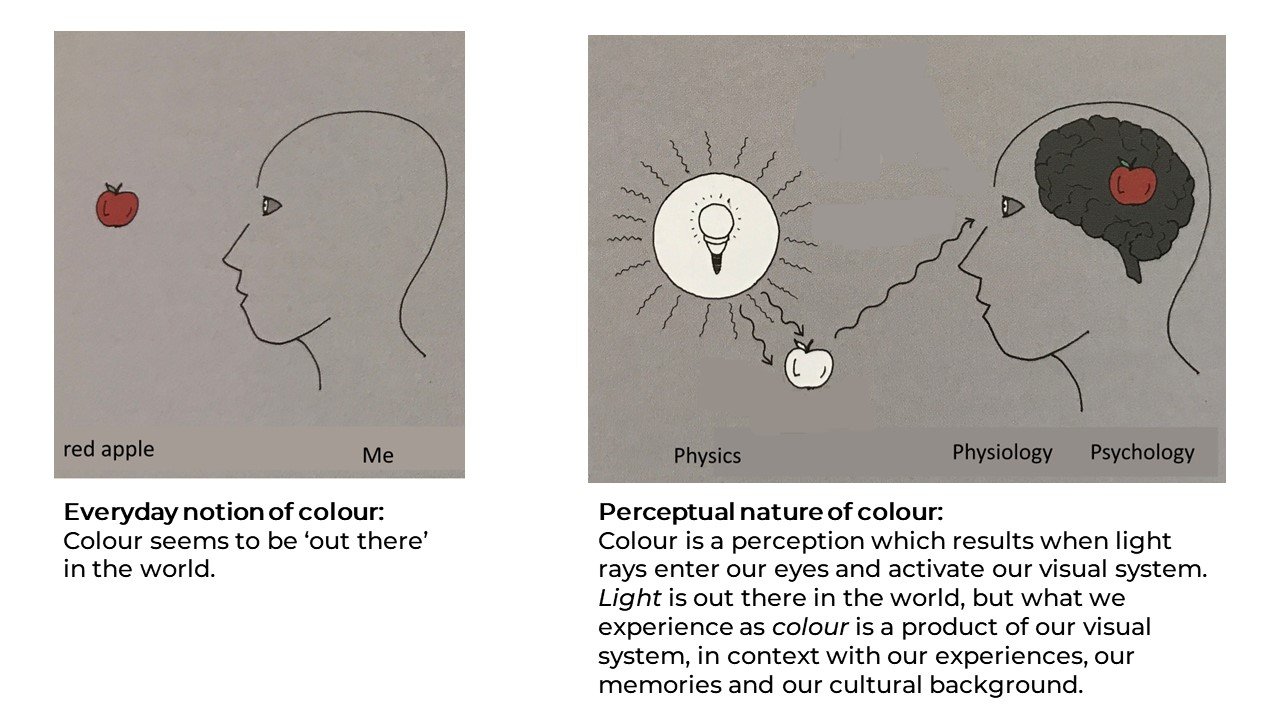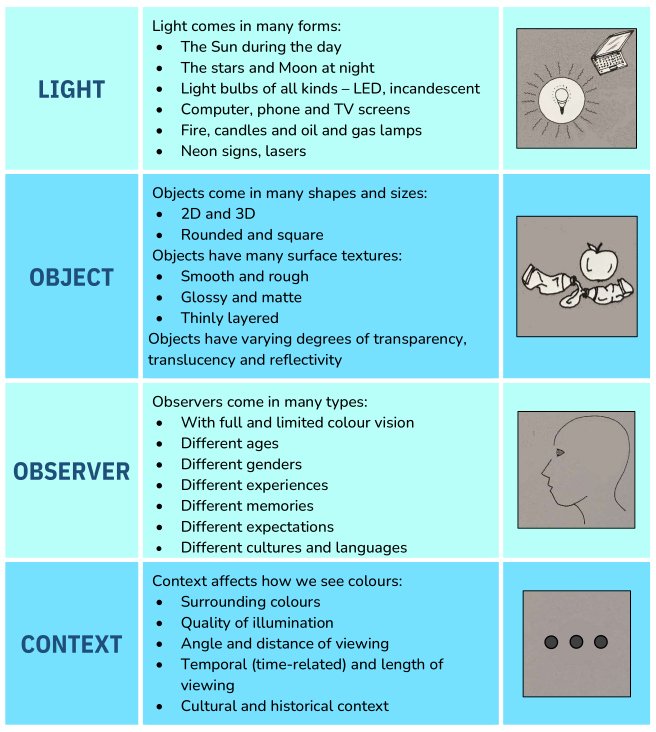Colour is contextual
We begin our Colour Literacy Exercises focusing on the contextual nature of colour. Our new colour curriculum begins with looking, seeing and experiencing nuanced variations of colour, rather than starting with the standard mixing of red-yellow-and-blue coloured paints, and using the colours of the rainbow ‘ROYGBIV’ to introduce and name colours. The study of colour and context is not traditionally done at the foundational level. However, noticing how our perception of colours change with their context – be it due to their surrounding environment, illumination source, or distance – is a big eye opener and a good way to begin to truly understand colour. This approach is a fundamental shift away from the way colour is traditionally taught.
These introductory exercises provide simple and effective ways of deepening and broadening the visual experience, increasing the ability to articulate about those experiences, and can be used at any age level.
Noticing and describing how colours appear is something that young children can do, however it is also a useful approach for those who are ‘colour-savvy’. Regardless of your background and experience with colour, approach these exercises with fresh eyes. You may experience something new, re-frame a familiar idea, refresh your past learning, or finally understand a longstanding puzzle. These foundational exercises are intended to be for everyone, and provide a good general knowledge base for all learners. Colour is not only a topic for art class and for art students; it is for everyone.
The figure below gives you a sense of everything that is involved in perceiving a red-coloured apple. There are many factors that come into play: a source of light, an object like an apple, an observer, all of which co-exist within a particular visual context. These factors that all play an interrelated role in colour perception are multi-faceted and can be quite complicated.
There is a difference between our everyday notion of colour, in that it seems to be ‘out there in the world’, and our internal experience of colour, as our visual system decodes and interprets the light that we receive into our eyes. Colour is essentially a visual experience. Light is out there in the world, but what we experience as colour is a product of our visual system, in context with our experiences, our memories and our cultural background.
This first set of exercises begins with colour illusions to underscore the contextual nature of colour. Although some of the underlying explanations behind these illusions may be quite complex (or even not fully understood), they nonetheless can be experienced, even by young children, and the experiences can be described. This is our starting point to shift away from our everyday notion of colour as being something that is out there in the world to recognizing that colour is something which is perceptually experienced. This awareness is a fundamental component of foundational colour knowledge.





